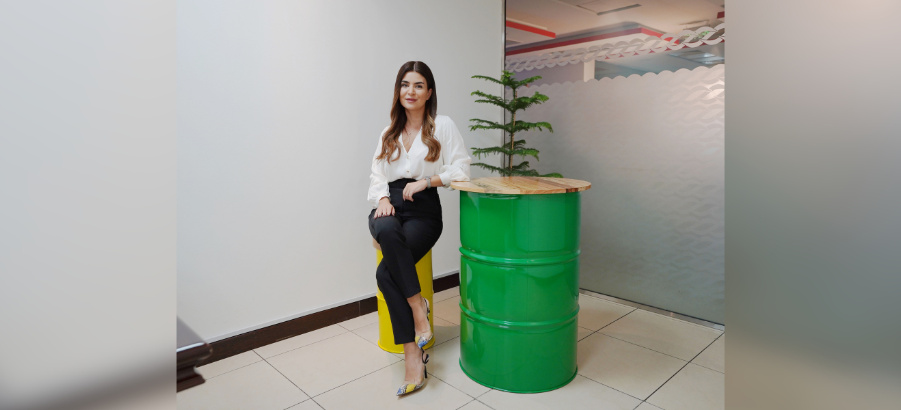Waste Management: The Silent Force Behind Sustainable Living
12 May, 2025
Joelle Saab of Dulsco Environment explains how effective waste management is the unseen backbone of resilient, future-ready communities
When we think of communities, we often imagine large spaces, expansive layouts, open green areas and a rich host of amenities. However, beneath the surface of any thriving, future-ready neighbourhood lies a foundation built on fundamentals. One of the most critical, and often overlooked, components is waste management.
Undeniable, waste management doesn’t seem as exciting as design and architecture or landscaping. Nevertheless, it’s one of the most important aspects that goes into building a resilient, and future-ready community. Today, as cities continue to grow and climate concerns escalate, builders face increasing pressure to deliver not just impressive structures and communities, but liveable environments rooted in sustainability and long-term quality of life. According to the statistics released by the World Bank, urban areas globally generate more than 2 billion tonnes of municipal solid waste every year. This number is expected to significantly increase by 70 percent by 2050 especially in rapidly growing regions like the GCC, where cities are expanding at exceptional speeds and the pressure on existing waste infrastructure is climbing.
It is not secret that in today’s world it’s important for builders, developers and urban planners to implement effective waste management strategies as a central responsibility. Doing so not only ensures operational efficiency also helps cater to modern buyers and tenants, who are increasingly eco-conscious and actively seek out homes and offices that support recycling, composting, and green living.
But the question that still remains is how to make waste a priority?
It all begins with designing with environmental solutions in mind. This means rethinking waste at the blueprint stage. Community master plans should include clearly defined waste flow systems starting from the building/house design to road access and the right infrastructure including segregated bins in public and private spaces, odour-controlled collection rooms, or where possible decentralized waste treatment solutions like composting or other suitable technology to target the relevant waste streams produced, and we shouldn’t forget intuitive signage and bin labeling that encourages proper disposal practices.
But the effort shouldn’t just stop at the design stage. What happens during construction is just as important.
Construction and demolition (C&D) waste accounts for a significant portion of total waste generated. Developers should partner with specialised waste recycling firms to ensure responsible handling of these materials. Valuable resources such as concrete, metal, wood, and other debris can be recovered and repurposed either reused within the same project or redirected to support other construction activities, thereby reducing landfill impact and supporting circular economy goals. For example, Dulsco Environment’s C&D Waste Recycling Plants in Ajman and Umm Al Quwain, launched in collaboration with the Ministry of Climate Change and Environment and the Ministry of Presidential Affairs, are excellent case studies. These facilities divert up to 95% of C&D waste from landfills, recovering valuable materials such as aggregates, sub-base, and sand for reuse in construction.
Beyond design and development, a big part of the waste management equation is collaboration with government waste authorities and environmental regulators. By engaging with these entities early in the planning process, developers can ensure complete alignment with recycling mandates, licensing requirements, and collection infrastructure. It also opens the door for partnerships that can result in co-developed facilities, pilot programmes, or incentives for sustainable practices.
Equally vital to infrastructure is the engagement of waste generators themselves—residents, tenants, workers, and visitors—through continuous education and awareness. Even the most advanced waste systems can fail without user buy-in. Developers should integrate community-wide communication plans that promote waste segregation, explain the importance of circularity, and encourage responsible disposal behaviours. Regular workshops, onboarding for new occupants, and digital tools like mobile reminders or dashboards can reinforce habits and increase participation. When people understand their role and impact, sustainability shifts from policy to practice, ensuring the long-term success of any waste management strategy.
Today, waste management isn’t just a box ticking exercise, it’s a design and architectural necessity. More and more forward-thinking developers are working on and implementing robust waste strategy in their initial planning process, not treating it as an afterthought. This shift is essential in ensuring future-ready communities. After all, the buildings we construct today will define how we live for decades to come and if we want these spaces to be truly sustainable, we must consider not only how people live in them—but also what and how they dispose waste.
For builders with a long-term vision, waste management is not a problem to solve. It’s an opportunity to lead.




